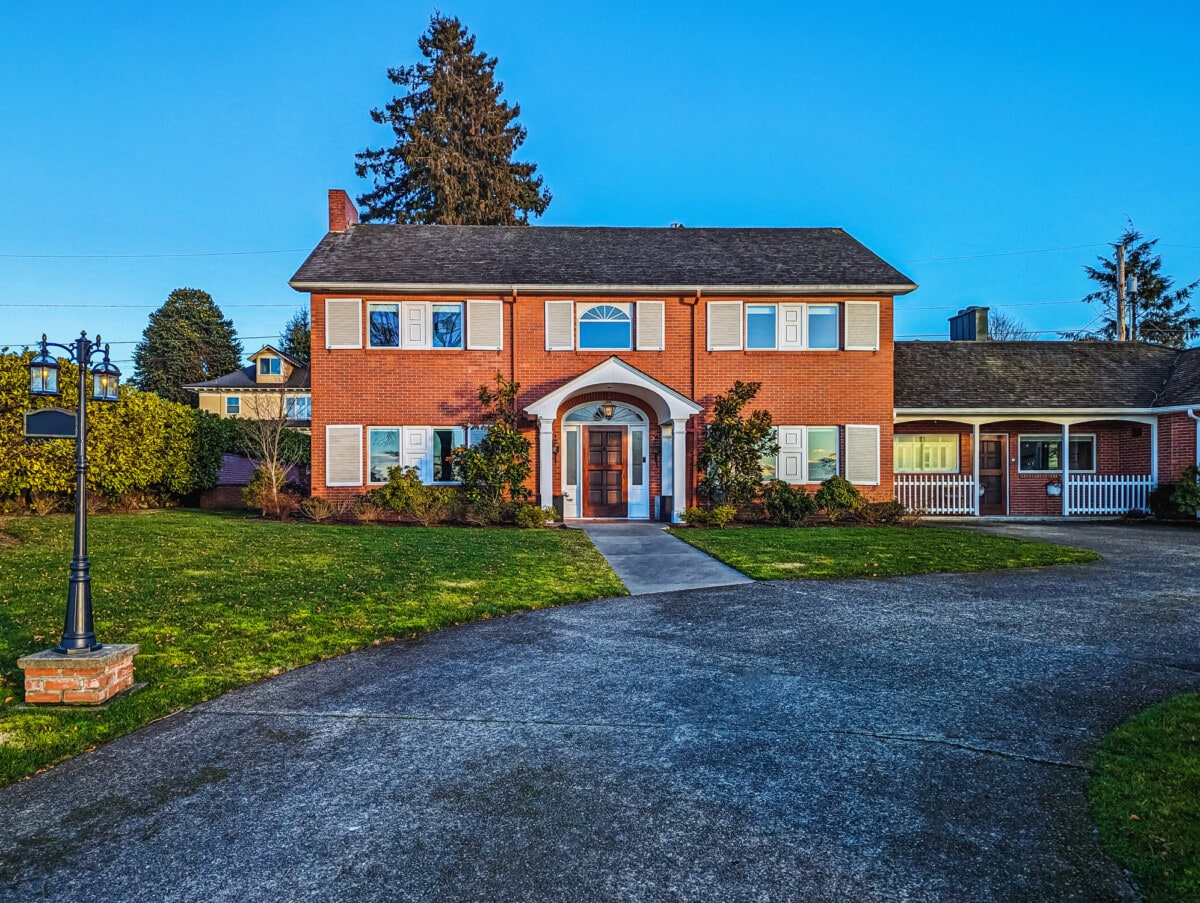Thinking about buying a house in 2025? From dreaming about your future home and what neighborhood you want to call home to touring properties and finally moving in, there’s a lot of excitement about beginning the homebuying process. However, between mortgage rates, your credit score, inspections, and closing costs, there’s a lot to understand.
In this Redfin article, we’re here to guide you through the process step-by-step. Whether you’re looking to buy a home in Seattle or a condo in Denver, here’s how to buy a house in 12 steps.
12 steps to buying a house
1. Determine if you’re ready to buy a house
2. See how much you can afford
3. Get pre-approved for a mortgage
4. Decide what type of mortgage is best for you
5. Find a real estate agent
6. Search homes for sale and tour properties
7. Make an offer on the home
8. Secure your mortgage
9. Schedule a home inspection
10. Have a home appraisal
11. Negotiate if needed
12. Close on your home

1. Determine if you’re ready to buy a house
The first step before beginning the homebuying process is to decide if you’re ready for homeownership. Before you start touring properties, ask yourself:
- Do I have enough savings? You’ll need cash for a down payment, closing costs, and an emergency fund for surprise repairs.
- Is my income stable? Consistent earnings and job security help you qualify for a loan and manage monthly payments.
- Is my credit and debt in a good place? A credit score of 620 or higher and a low debt-to-income ratio improve your mortgage options.
- Am I ready to stay put for a few years? Homeownership makes more sense if you plan to stay in one place for 3–5 years or longer.
- Can I handle the responsibility? Owning a home means handling maintenance, repairs, and property taxes on your own.
- Does buying make more sense than renting right now? Consider your local market and personal goals to decide if now is a good time to buy a house, buying doesn’t always beat renting.
2. See how much you can afford
The next step in the homebuying process is to determine your budget. The fastest way to get a sense of how much you can afford is with a home affordability calculator.
You can also find out how much you can afford with an online mortgage calculator. A mortgage calculator will estimate your mortgage payment, including the principal and interest, taxes, insurance, HOA, and PMI.
Good to know: You’ll need to account for other upfront costs like down payment (3%-20%), closing costs (2%-5%), and other ongoing costs property taxes, homeowners insurance, HOA fees, and maintenance. You’ll also want to have a cushion for unexpected expenses and maintain an emergency fund.
3. Get pre-approved for a mortgage
If you’re planning to buy a home with a mortgage, you’ll want to get a mortgage pre-approval. Getting pre-approved initiates the mortgage process with a lender and tells you how much you can borrow. It also allows you to move faster when you’re ready to make an offer.
Good to know: It’s important to get quotes from multiple lenders, rather than choosing the first mortgage lender you come across or even your current bank. Different lenders offer different mortgage options and rates, so research is key to finding the best rate for you.

4. Decide what type of mortgage is best for you
There are many factors to help determine the right mortgage loan for you and which ones you qualify for. Let’s take a look at the five of the most common types of mortgage loans:
- Conventional loan: Not government-backed. Requires good credit and a stable income.
- FHA loan: Backed by the Federal Housing Authority (FHA). Allows lower credit scores and smaller down payments.
- VA loan: For eligible veterans and service members. No down payment required.
- USDA loan: For eligible rural properties. Also offers no-down payment options.
- Jumbo loan: For homes that exceed conforming loan limits. Requires stronger credit and income. Learn more about jumbo loans.
5. Find a real estate agent
Choosing the right real estate agent can be the key to finding the right home and getting the best deal. It’s always important to research and ask a variety of questions to find the best fit for your homebuying journey. Choose someone who:
- Knows your target area
- Understands your budget and goals
- Has strong reviews and recent experience
Good to know: Before touring homes with an agent, you’ll most likely need to sign an agreement with your agent. This agreement will outline the agent’s commission, so you understand how much they’re paid. Depending on the agreement, you may be required to pay these fees, or you can negotiate that the seller pays instead.
 FangXiaNuo via Getty Images
FangXiaNuo via Getty Images6. Search homes for sale and take home tours
The next step when buying a house is to start browsing homes for sale in your area. It’s important to use your wish list to inform your home search. That way, you can narrow down your search to the price range, home style, location and neighborhood, and other amenities.
Then you’ll want to start attending open houses and home tours. Here’s what to look for:
- Home style
- Layout you want
- Features you like or dislike
- Roof, window, and HVAC conditions
- Appliances and plumbing
- Red flags, like smells, unkept rooms, or mold
When you’re touring multiple homes, it’s easy to confuse the different features or concerns you have about one house with another you’ve seen, so take notes as you’re touring.
Good to know: Ask your agent for their input. They may have additional insight about the home or spotted an issue you didn’t initially catch.
7. Make an offer on the home
Once you’ve found the house you’re looking for, it’s time to work with your real estate agent to make an offer. Discuss your offer strategy with your agent. Is the home priced fairly? What will make your offer stand out?
Your real estate agent will know what’s best for the housing market conditions. They’ll consider your budget and the asking price for comparable homes in your area to help you make an offer that will stand out to home sellers.
Your offer will include:
- Purchase price
- Contingencies (e.g., inspection, appraisal)
- Closing timeline
- Earnest money deposit (typically 1%–3%)
- Deadline for sellers to respond

8. Secure your mortgage
A mortgage pre-approval isn’t the same thing as officially getting a mortgage. Once you have the purchase agreement for the home, the next step is to apply for a mortgage:
- You can work with the lender who pre-approved your loan or choose a different lender.
- Choosing the same lender who pre-approved your mortgage can help speed up the process.
- After choosing your mortgage lender, you’ll need to submit information about yourself. You’ll receive a list of the forms your lender needs.
As soon as the mortgage application is finished, it will go into the underwriting process.
- An underwriter will thoroughly review your finances to determine whether you are a good candidate for the loan.
- You may be requested to provide additional information about your finances.
- The underwriter will do a title search on the property to ensure the current owners actually own the property.
- They’ll also check the home appraisal (step 10) to make sure the home’s value aligns with your purchase price.
The mortgage underwriting process can take anywhere from 2 to 45 days, depending on your circumstances and the local market.
9. Schedule a home inspection
One of the most important steps to buying a house is a home inspection. A professional home inspector will conduct an inspection of the home, identifying any existing structural, electrical, or plumbing issues.
After the inspection is completed, you’ll receive a report detailing the results:
- Go through the report thoroughly
- Look for major problems like mold, termites, or lead paint
- Consult with your agent for advice on any red flags they noticed
If the inspection report indicates any major issues with the home, you can try to negotiate repairs or a lower price with the seller. Remember that once the sale closes, any major repairs are up to you to fix. So if the inspection report shows issues with the foundation or leaks in the roof, it’s best to address them with the seller now.
10. Have a home appraisal
A home appraisal is the official opinion of the home’s value by a licensed appraiser. If you have a mortgage, a home appraisal is usually required to approve the loan. Lenders want to ensure that they aren’t lending you more money than the home is actually worth. Even if you’re planning to buy a home in cash, an appraisal can indicate if you’re overpaying for the home’s value.
During the appraisal process, the appraiser will report on the home’s size, amenities, floor plan, additional features, and comparable homes in the area. If the home’s appraised value is lower than your current offer, you can consider negotiating the price down or increasing your down payment.

11. Negotiate if needed
Depending on the details of the home inspection and home appraisal reports, you may need to negotiate with the seller. For example, you may ask the seller to complete necessary repairs before closing, negotiate the price down, or ask for a credit. On the other hand, you may also receive a counteroffer from the seller that you want to negotiate.
Your agent will help you through the negotiation process. They’ll advise you on the best option: waiving contingencies, raising your earnest money or overall price, or changing the closing date. Expect that you may go back and forth with the seller before reaching an agreement on the offer.
Good to know: If it’s a buyer’s market, with more homes for sale than buyers, you may have more options for negotiating the price back down. If it’s a seller’s market, with more buyers than homes for sale, it may be more difficult to negotiate with the seller since there are likely other buyers waiting to make an offer.
12. Close on the home
You’ve reached the final steps to buying a house, the closing process. Your lender will provide you with the closing disclosure documents at least three days before your closing date. This document details how much you’ll need to pay at closing, monthly mortgage payments, and the loan terms. Make sure to review this document carefully.
You and your real estate agent will likely conduct a final walkthrough on the home to ensure everything is in place and there’s no new damage to the property.
On your closing date, you’ll need to bring your ID, proof of funds for your closing costs, and the closing disclosure. Once the money is exchanged, the title will now be in your name. A title company or real estate attorney will close the transaction, and you will typically get the keys after 5 p.m. on your close date. Congratulations, you’re officially a homeowner.

FAQs about how to buy a home
How much should you save for a down payment?
The traditional advice is to save for a 20% down payment as it can help you secure a better mortgage rate and avoid private mortgage insurance (PMI). However, a 20% down payment isn’t a requirement. Many homebuyers put down less, with down payments ranging from 3% to 10%.
How much should you save for closing costs?
Closing costs are about 2 – 5% of the purchase price. Closing costs typically include appraisal costs, home inspection fees, title insurance, and more. As your closing date approaches, your lender will give you a closing disclosure, which details the breakdown of these fees.
What are first-time homebuyer programs?
First-time homebuyer programs help cover the costs of down payment and closing costs. There are three main types of programs – loans, grants, and credits.
What happens after submitting an offer?
There are three main scenarios that can happen after submitting your offer on a home.
- Your offer is accepted: If the seller accepts your offer, then you’ll move on to the next step.
- Your offer is rejected: If the seller rejects your offer, you’ll need to begin looking for other homes for sale.
- You receive a counteroffer: The seller has sent a counteroffer, which can be several things. They may change the purchase price, ask to dismiss a contingency, or other terms of the sale. It’s up to you and your agent if you want to negotiate, accept the offer, or reject the offer.
What’s an earnest money deposit?
An earnest money deposit is usually 1 – 3% of the purchase price but can vary by market. It’s often submitted in your offer letter to show the seller that you’re serious about buying their home. If your offer is accepted, this money typically goes toward the down payment or closing costs. If you back out of the purchase later, you may lose the earnest money deposit.
When do you need to get home insurance?
Many lenders require you to have home insurance before approving the loan. Depending on your location, you may also be required to purchase additional insurance policies like fire or flood insurance.
What is a home inspection contingency?
A home inspection contingency is submitted in your offer. It typically allows you to negotiate repairs or back out of your offer without losing your earnest money deposit, if the home inspection identifies major issues.
What is a home appraisal contingency?
An appraisal contingency is also submitted in your offer. It typically allows you to negotiate a lower price or withdraw your offer, without losing the earnest money deposit, if the home’s appraised value is lower than your offer. Each appraisal contingency will vary slightly, so speak with your agent to understand the details.
.png)
 German (DE)
German (DE)  English (US)
English (US)  Spanish (ES)
Spanish (ES)  French (FR)
French (FR)  Hindi (IN)
Hindi (IN)  Italian (IT)
Italian (IT)  Russian (RU)
Russian (RU)  4 days ago
3
4 days ago
3







Comments